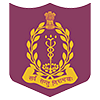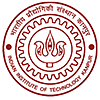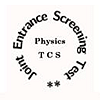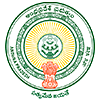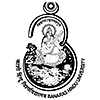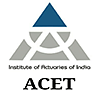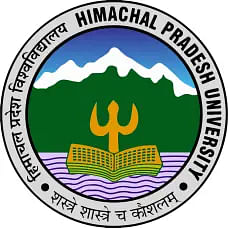
Table of Contents
The exam authorities determine the syllabus for the AFMC 2025 exam. It is very important for the candidates to go through the AFMC Nursing syllabus 2025 before starting the preparation, as it helps them to understand the different topics and concepts in all the chapters.
It also provides an insight into the type of questions that can be expected in the exam. This section discusses the syllabus for AFMC Nursing Exam. Candidates can read through this page completely for detailed information about the syllabus.
AFMC Nursing Syllabus 2025
The AFMC BSc. Nursing entrance exam syllabus 2025 is based on class 10 and 12 subjects of Science Branches, English Language Capabilities, and Logical Reasoning. The subjects falling under the syllabus are:
- Physics
- Biology
- Chemistry
- General English
- Logical Understanding and Reasoning
The AFMC Nursing syllabus 2025 is elaborated in terms of the subjects below. Candidates can check them out for reference.
Also Read: Nursing Courses after 12th
AFMC Nursing 2025 Syllabus for Physics
The AFMC Nursing 2025 syllabus for physics subject widely comprises topics from the class 10 and 12. The syllabus ranges from prominent physics topics such as motion and its laws, gravitational forces, aspects of electricity and magnetism, thermodynamics, electrons and photons.
The candidates have to go through the entire physics syllabus, topic by topic, for understanding their distribution, and to learn them better.
Introduction and Measurement
This chapter comprises topics like Physics in relation to Science, Society and Technology; Need for Measurement of Physical Quantities, Units for Measurement, Fundamental and Derived Units, Dimensions of Physical Quantities, Dimensional Analysis and its Applications, Orders of Magnitude, Accuracy and Errors in Measurement–Random and Instrumental Errors, Rounding Off the Numbers and their Significant Features, Graphical Representation, Functions of Trigonometry, Integration and Differentiation.
Description of Motion in One Dimension
The topics of this chapter are Objects in Motion in One Dimension, Motion in a Straight Line, Motion - Uniform and Non Uniform, Speed and Velocity, Velocity in Relative Terms, Uniformly Accelerated Motion, Average Speed and Instantaneous Velocity, Graphical Representation and Formulae, Velocity-Time Graph, Relations for Uniformly Accelerated Motion with Examples, Acceleration in One-Dimensional Motion, Position-Time Graph and their Formulae.
Description of Motion in Two and Three Dimensions
The important topics are Vectors and Scalars Quantities, Vectors in Two and Three Dimensions, Resolution of a Vector in a Plane, Vector Addition and Multiplication by a Real Number, Null-Vector and its Properties, Scalar and Vector Products, Rectangular Components, Motion in Two Dimensions, General Relation Among Position-Velocity-Acceleration for Motion in a Plane and Uniform Circular Motion, Cases of Uniform Velocity and Uniform Acceleration-Projectile Motion, The Motion of Objects in Three-Dimensional Space (Elementary Ideas).
Laws of Motion
This chapter comprises topics like Force and Inertia, the First Law of Motion, Momentum, the Second Law of Motion, Impulse, Examples of Different Forces in Nature, Third Law of Motion, Conservation of Momentum, Rocket Propulsion, Laws of Friction, Equilibrium of Concurrent Forces, Rolling Friction, Inertial and Non-Inertial Frames (Elementary Ideas), Static and Kinetic Frictions, Lubrication.
Work, Energy and Power
The topics of this chapter are work done by a Constant Force and by a Variable Force, Unit of Work, Energy and Power, Work-Energy Theorem, Elastic and Inelastic Collisions in One and Two Dimensions, Notions of Potential Energy, Conservation of Mechanical Energy: Gravitational Potential Energy, and its Conversion to Kinetic Energy, Potential Energy of a Spring, Conservative Forces, Different Forms of Energy, Mass-Energy Equivalence, and Conservation of Energy.
Also Check: Paramedical Courses in India
Rotational Motion
The important topics are Centre of the Mass of a Two-Particle Systems, Momentum Conservation, and Centre of Mass Motion. Angular Momentum and its Geometrical and Physical Meaning, General Motion of a Rigid Body, Nature of Rotational Motion, Comparison Between Translatory (Linear) and Rotational Motion, Torque, Centre of Mass of Rigid Body, Conservation of Angular Momentum, Moment of Inertia of Uniform Bodies with Simple Geometrical Shapes, Examples of Circular Motion (Car on a Level Circular Road, Car on Banked Road, Moment of Inertia, its Physical Significance, Pendulum Swinging in a Vertical Plane), Parallel Axis and Perpendicular Axis Theorem (statements only), Rotational Motion of a Single Particle in Two Dimensions Only.
Gravitation
This chapter comprises topics like Acceleration due to Gravity, One and Two-Dimensional Motion under Gravity, The Universal Law of Gravitation, Inertial and Gravitational Mass, Variations in the Acceleration due to the Gravity of Earth, Statement of Kepler’s Laws of Planetary Motion, Orbital Velocity, Geostationary Satellites, Gravitational Potential, Gravitational Potential Energy near the Surface of the Earth, Escape Velocity, Weightlessness.
Heat and Thermodynamics
The topics of this chapter are Thermal Equilibrium and Temperature (Zeroth Law of Thermodynamics), Heat, Work, and Internal Energy, Specific Heat, Specific Heat at Constant Volume, and the Constant Pressure of Ideal Gas and its Relation, The First Law of Thermodynamics, Thermodynamic State, Equation of State and Isothermals, Pressure-Temperature Phase Diagram, Thermodynamic Processes (Reversible, Irreversible, Isothermal, Adiabatic), Carnot Cycle, the Second Law of Thermodynamics, the Efficiency of Heat Engines, Entropy, Transfer of heat: Conduction, Convection and Radiation, Newton’s Law of Cooling, Thermal Conductivity, Black Body Radiation, Wien’s Law, Solar Constant and Surface Temperature of the Sun, and Stefan’s Law.
Oscillations
The important topics are Periodic and Oscillatory Motions, Simple Harmonic Motion (S.H.M.) and its Equation of Motion, Oscillations due to a Spring, Simple Pendulum, Resonance and Damped Oscillations; Simple Examples, Physical Concepts of Forced Oscillations, Kinetic Energy and Potential Energy in S.H.M.
Waves
This chapter comprises topics like Longitudinal and Transverse Waves and Wave Motion, Speed of the Progressive Wave, Principle of Superposition of Waves; the Reflection of Waves, Harmonic Waves (Qualitative Treatment Only), Standing Waves, Normal Modes and its Graphical Representation, Beats, and Doppler Effect.
Electrostatics
The topics of this chapter are Frictional Electricity, Charges and their Conservation, Unit of Charge, Coulomb’s Law, Dielectric Constant, Electric Field, Electric Field due to a Point Charge, Electric Potential–its Physical Meaning, Potential due to a Dipole, Dipole Field and Behaviour of Dipole in a Uniform (2- Dimensional) Electric Field, Flux, Statement of Gauss’s Theorem and its Applications to find the Electric Field, due to Uniformly Charged Simple Systems, Capacitance (Parallel Plate), Presence of Free Charges and Bound Charges Inside a Conductor, Dielectric Material and its Effect on Capacitance (Concept Only), Conductors and Insulators, Capacitances in Series and Parallel, the Energy of a Capacitor, and Van de Graff Generator.
Also Check: Medical Courses in India
Current Electricity
The important topics are, Introduction (Flow of Current), Sources of EMF, Cells: Simple, Secondary, Chargeable, Combinations of Cells in Series and Parallel. Electric Current, the Resistance of Different Materials, Temperature Dependence, Wheatstone’s Bridge, Thermistor, Specific Resistivity, Colour Code for Carbon Resistors. Superconductors (Elementary Ideas). Kirchoff’s Laws, Measurement of Resistance, Resistances in Series and Parallel, Ohm’s Law and its Limitation. Potentiometer–the Measurement of EMF and Internal Resistance of a Cell.
Thermal and Chemical Effects of Currents
This chapter comprises topics like Electric Power, Chemical Effects, Heating Effects of Current and Joule’s Law. Thermoelectricity: Seebeck Effect, Measurement of Temperature using a Thermocouple. Faraday’s Laws of Electrolysis.
Magnetic Effect of Currents
The topics of this chapter are Ersted’s Observation, Biot-Savart’s Law (Magnetic Field due to an Element of Current), Circular Loop, Magnetic Field due to a Straight Wire and Solenoid. Force on a Moving Charge in a Uniform Magnetic Field (Lorentz Force), Cyclotron (Simple Idea), Forces and Torques on Currents in a Magnetic Field, Forces between Two Currents, the Definition of Ampere, Moving Coil Galvanometer, Ammeter and Voltmeter. Conversion of Galvanometer to Voltmeter and Ammeter.
Magnetism
The important topics are Bar Magnet (Comparison with a Solenoid), Magnetic Lines of Force, Torque on a Bar Magnet in a Magnetic Field, Earth’s Magnetic Field as a Bar Magnet, Vibration Magnetometer, Electromagnets, Dia, Para and Ferromagnetic Substances, Permanent Magnets, Tangent Galvanometer.
Electromagnetic Induction and Alternating Currents
This chapter comprises topics like Faraday’s Law of Electromagnetic Induction, Lenz’s Law, Induced EMF, Self and Mutual Inductance. Alternating Voltage and Current; Capacitance and Resistance; Phase Relationships and Power in Alternating-Current Circuits, L.C Oscillations, Eddy Current, Alternating-Current Circuits containing Inductance, Electrical Machines and Devices (Transformer, Induction Coil, Generator, Simple Motors, Choke and Starter), Reactance and Impedance.
Electromagnetic Waves
The topics of this chapter are, Electromagnetic Oscillations, a Brief History of Electromagnetic Waves (Maxwell, Hertz, Bose, Marconi) Electromagnetic Spectrum (Radio, Microwaves, Infra-Red, Optical, Ultraviolet, Xray, Gamma Rays) including Elementary Facts about their Uses, Propagation of Electromagnetic Waves in the Atmosphere.
Ray Optics and Optical Instruments
Absorption and Emission Spectra. Phenomena of Reflection. Optical Fibre. Curved Mirrors. Scattering and Formation of the Rainbow. Microscope and their Magnifications and Resolving Powers. Refraction, Mirror and Lens Formulae, Dispersion by a Prism. Limiting Case of Wave Optics. Spectrometer, Total Internal Reflection. Lenses. Telescope (Astronomical), Ray Optics.
Electrons and Photons
This chapter comprises topics like Discovery of the Electron, E/M for an Electron, Electrical Conduction in Gases, Photocells, Particle Nature of Light, Matter Waves-Wave Nature of Particles, Davison and Germer Experiment. Photoelectric Effect, Einstein’s Photoelectric Equation.
Read More: Post-Basic BSc Nursing
Atoms
The topics of this chapter are Molecules and Nuclei, Rutherford's Model of the Atom, Bohr Model, Energy Quantization. Nuclear Fusion and Fission. Hydrogen Spectrum. Composition of the Nucleus, Atomic Masses, the Binding Energy per Nucleon of a Nucleus, its Variation with Mass Number, Isotopes, Size of the Nucleus. Radioactivity: Properties of Rays. Mass-Energy Relation.
Solids and Semiconductor Devices
The important topics are Crystal Structure-Unit Cell; Single, Poly and Liquid Crystals (Concepts Only). Energy Bands in Solids, the Difference between Conductors, Combination of Gates. Insulators and Semiconductors using Band Theory. Transistor as an Amplifier and Oscillator, Intrinsic and Extrinsic Semiconductors, P-N Junction, Semiconductor Diodes, Junction Transistor, Diode as Rectifier, Solar Cell, Photodiode, LED, Zener Diode as a Voltage Regulator, Elementary Ideas about IC.
AFMC Nursing Syllabus 2025 for Chemistry
The Chemistry Syllabus is also based on topics and concepts from class 10 and 12 Science. Some major topics in AFMC Nursing 2025 Syllabus for Chemistry are Matter and its States, Bonding, Solutions, Various Block Elements, the Different Types of Compounds, Kinetics, etc. The detailed syllabus is elaborated below as a table. Candidates are advised to go through the table fully.
| 1 | Some basic concepts in Chemistry |
| 2 | States of matter |
| 3 | Atomic structure |
| 4 | Classification of elements and periodicity in properties |
| 5 | Chemical energetics |
| 6 | Chemical bonding |
| 7 | Equilibrium |
| 8 | Chemical kinetics |
| 9 | Solid state Chemistry |
| 10 | Electrochemistry |
| 11 | General principles and processes of isolation of elements |
| 12 | The d-and f-Block elements |
| 13 | The s-Block Elements (Alkali and Alkaline Earth Metals) |
| 14 | Surface chemistry |
| 15 | Chemical thermodynamics |
| 16 | The p-Block Elements |
| 17 | Hydrogen |
| 18 | Solutions |
| 19 | Redox reactions |
| 20 | Coordination compounds |
| 21 | Some basic principles of Organic Chemistry |
| 22 | Hydrocarbons |
| 23 | Purification and characterization of carbon compounds |
| 24 | Organic compounds with functional groups containing halogens (X) |
| 25 | Organic compounds with functional groups containing oxygen |
| 26 | Organic Compounds with a functional group containing nitrogen |
| 27 | Polymers |
| 28 | Environmental Chemistry |
| 29 | Chemistry in Daily life |
| 30 | Biomolecules |
AFMC Nursing 2025 Syllabus for Biology
This syllabus section is also based on the class 10 and 12 subjects of Science Streams. The important topics associated with the AFMC Nursing Syllabus 2025 for Biology are Cells, Genetics, Reproduction, Aspects of the Environment and Ecology, etc. The complete syllabus for the Biology Subject is given below as a table for the reference of the candidates.
|
1 |
Genetics and Evolution |
|
2 |
Biology and Human Welfare |
|
3 |
Structure and Function–Plants |
|
4 |
Diversity in Living World |
|
5 |
Cell: The Unit of Life; Structure and Function |
|
6 |
Reproduction and Development in Humans |
|
7 |
Biotechnology and its Applications |
|
8 |
Ecology and Environment |
|
9 |
5 Structure and Function–Animals |
|
10 |
Reproduction, Growth, and Movement in Plants |
AFMC BSc. Nursing Entrance Exam Syllabus for General English
This subject tests the candidate's knowledge in the English language and how they would comprehend written material. It prominently tests the candidate's reading skills and abilities. The AFMC Nursery syllabus 2025 for General English subject comprises the following topics:
-
Comprehension of a Written Passage.
-
Correction of Sentences.
-
Concepts like Word Definitions, Antonyms, Synonyms, Analogies, Parallel Relationships, etc, will be covered in this section.
-
The candidate's abilities in logically and systematically completing a sentence will also be tested in this section.
AFMC Nursing 2025 Syllabus for Logical Intelligence Syllabus
In the Logical Intelligence Section, the candidates will be tested for their abilities in Reasoning, Logical Thinking, and Decision Making. Some of the most important topics under the AFMC BSc. Nursing Entrance Exam Syllabus for Logical Intelligence is given below for the reference of the candidates:
-
Concepts like Series, Coding, Arranging, Numbering and Family Tree.
-
Concepts such as Syllogisms, Critical Reasoning, and Conclusion Statements. These topics are meant for testing the candidates' abilities in Verbal Reasoning.
Also Check: ANM vs GNM vs B.Sc Nursing
AFMC Nursing 2025 Exam Pattern
Along with going through the AFMC Nursing Syllabus 2025 candidates are also advised going through the exam pattern throughly. Knowing the question paper pattern helpS the candidates understand the distribution and weighting of marks in the exam. This way, candidates can prepare well for the exam. The exam pattern is depicted below in the form of a table:
| Subjects | Marks |
| Physics | 45 |
| Chemistry | 45 |
| Biology | 45 |
| English | 45 |
| Total Marks: | 180 |
- Mode of the exam - online mode
- Question paper type - objective type questions
- The total time allotted for the exam is 90 minutes (1 hour 30 minutes).
- Each question for the exam carries 1 mark. Every right answer will be awarded a mark.
- There is no negative marking in the AFMC Nursing 2025 Entrance Exam.
FAQs on AFMC Nursing Syllabus
Q: Who determines the syllabus of Afmc Nursing 2025 Syllabus?
The exam authorities determine the syllabus for the AFMC 2025 exam.
Q: Which subjects falls under Afmc Nursing 2025 Syllabus?
Physics, Biology, Chemistry, General English and Logical Understanding and Reasoning falls under Afmc Nursing 2025 syllabus.
Q: Is Afmc Nursing 2025 syllabus sufficient for exam?
Students can prepare from sample papers apart from Afmc Nursing 2025 syllabus for the exam.
